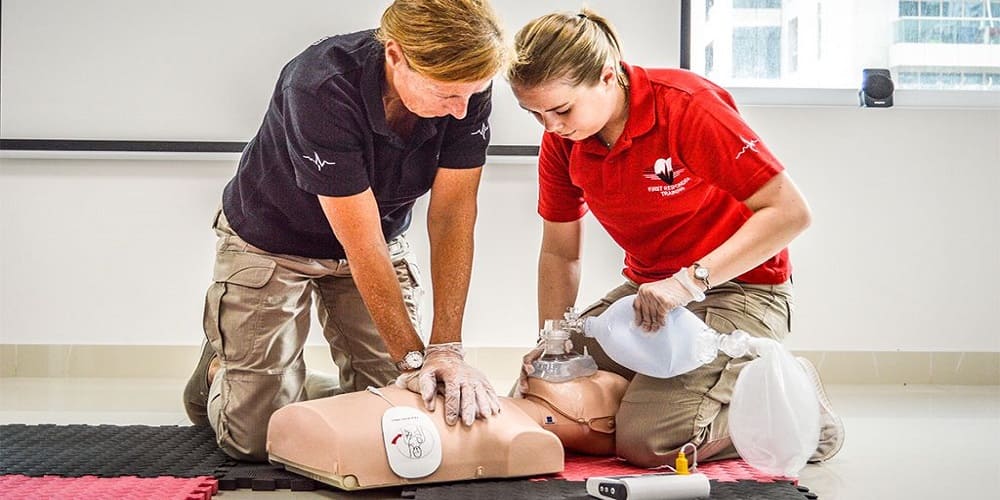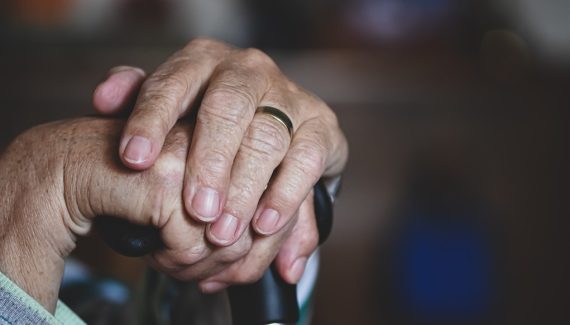BLS or Basic Life Support is given to people needing medical care. It is usually given to people suffering from cardiac arrest in or out of the hospital. BLS is also given to people suffering from respiratory problems, choking, or drowning. Professionals trained in Basic Life Support must be highly skilled as it is a matter of life and death for a person. They are the ones who can restore the life of a patient. The paramedics are the ones who try to keep the patient alive before the ambulance or the doctors arrive.

Contents
The Elements Of Basic Life Support
During Basic Life Support, the professionals must have the basic skills to restore a patient, including a step-wise initiation. BLS training gives you the confidence to act quickly which requires life-saving measures. The critical elements one should follow while giving a patient Basis Life Support are the following.
- Prompt recognition min case of cardiac failure
- Call for urgent medical help
- Early effective CPR
- Early defibrillation
- Early advanced life support
- Integrated post-cardiac arrest care.
CPR Is an Essential Element of Basic Life Support
CPR or Cardio Pulmonary Resuscitation is the best life-saving technique. Cardiac arrest can occur anywhere. The house is the most prominent place where people usually suffer from cardiac failure. Therefore, if Basic Life Support is given to the patient, there is always a possibility of restoring the patient’s life. CPR aims to keep the blood and oxygen flow moving when the patient’s heart and breathing suddenly stop. The professionals who give CPR as a Basic Life Support need to follow the steps that are:
Danger:
Secure the danger area and ensure the victim is safe along with the rescuer and bystanders.
Response:
It is essential to check the victim first. Shake the shoulder and ask loudly so the patient can give some answers if possible. If you find the patient responding, leave him in the position, keeping in mind that there is no further danger. However, if the patient is not responding, try to find the reasons as soon as possible.
Send for help:
As soon as you find the patient’s condition is critical, send for immediate medical help.
Airway:
If you find the patient not breathing or irregularly breathing, immediately turn the patient around on his back and open the airway using the head tilt and chin lift. You must also shout for help immediately.
Breathing:
It is essential to find out whether the patient is breathing or not. Therefore, you have to look, listen and feel for normal breathing at least for ten seconds. If you find the patient is breathing normally, you need to turn the patient into a recovery position and call for immediate help. You must continue to check the breathing of the patient until the arrival of any medical assistance.
CPR:
If you find that the patient is not breathing or there are some irregularities in breathing, then you must go for CPR. You need to give the patient thirty chest compressions at the rate of a hundred per minute. In the meantime, you must also call for an ambulance.
After giving the chest compression, perform mouth-to-mouth breath at least two times and continue to provide chest compression till the breathing is a bit normal.
Defibrillator:
You need to continue giving chest compression till the ambulance arrives with professional medical assistance and a Defibrillator.
Types of CPR Techniques
CPR as an element of Basic Life Support is of 2 types:
Hands-only CPR:
When a person suddenly stops breathing due to cardiac arrest or drowning, call for help immediately. However, you must try restoring the patient’s life instead of waiting for the ambulance or any other prompt medical assistance. It would be best if you kept on pushing on the patient’s chest rigorously with your hands until there was movement in the flow of blood in the body.
CPR with breath:
It involves mouth-to-mouth breaths. It is an effective CPR that you can perform on people who cannot breathe. Usually, when people are rescued from drowning, they stop breathing, and an instant CPR with breath can revive the patient’s life.
Basis Life Support continues until the victim regains his pulses and it ends when the victim is pronounced dead by a medical doctor.
Essential Life Support is given to a patient of a victim who is not responding, and the breathing is not normal. If an early compression is given to the patient instantly, it can improve outcomes by keeping the brain and heart regular. You must check the smooth flow of air and blood in the circulatory system before the collapse.
Rules For An Adequate Basic Life Support
Following are the rules for achieving an effective chest compression:
- The compression must be 100 – 120 compressions per minute, which is applicable for all ages.
- Push down firmly on the sternum to about 1/3 of the depth of the chest
- Count while pushing on the chest. It would be best to remember that the push needs to be in a regular rhythm.
- There must be a compression/relaxation ratio of 50:50 with complete chest recoil between each compression.
- It requires a lot of energy for the rescuer to regularly compress the patient’s chest, leading to tiredness and fatigue. Hence there needs to be a frequent rotation of personnel after approximately 200 compressions or two minutes.
- While performing Basic Life Support, you must avoid compression below the lower limits of the sternum as it may cause damage to the liver, spleen, or stomach.
- There should not be any Interruptions while performing chest compressions, and it would be best if you tried to carry on with the chest compression until the patient revives. Hence, you must have an additional person give the victim chest compression.
- It would be best to avoid compressions too high as ineffective depth is achieved.
- After every 30 compressions, you must follow it up with at least two rescue breaths if needed.
How To Combine Mouth-To-Mouth Breathing With CPR
As you perform CPR, you must combine it with mouth-to-mouth breathing if the need arises, and it will help the patient to revive faster. However, you must follow specific rules while combining rescue breathing with CPR.
Following are the steps that you can perform while using CPR. It applies to adults as well as teens and infants.
Perform chest compressions:
You must first check for the area where you can safely perform Basic Life Support to the patient in the form of CPR. The first step is to place the victim on a plain flat surface before completing the first thirty compressions on the victim’s chest.
Open the airway:
Put the palm of your hand on the victim’s forehead and tilt your head back. Gently lift the chin of the victim with your other hand.
Give rescue breaths:
With the airway open, hold the nostrils, so there is no air inflow. Cover the victim’s mouth with a CPR face mask to make a seal. You must cover your mouth and nose with the show when performing CPR on a child. However, if you do not find a mask around, you need to cover the patient’s mouth with your mouth. Give two rescue breaths for about 1 second each. While giving the rescue breaths, you must keep a watch on the chest of the patient. If it rises with each breath, then the CPR provides some action. However, if the patient is not responding with the rescue breaths, you must reposition the face mask and try again.
Alternate rescue breathing with chest compressions:
It is necessary that after each set of thirty chest compression, you need to give at least two rescue breaths. It would be best if you continued alternating chest compression with rescue breaths till you see that the patient is beginning to puff or until any medical support comes to the rescue of the victim.
If the victim revives after CPR, gently move him to a favorable position until the ambulance arrives.
When Does A Victim Require Basic Life Support?
Heart attacks and strokes are common nowadays. However, if the victim does not receive instant Basic Life Support, it can endanger the victim’s life. Hence, as a professional, you must understand the need for Basic Life Support for a patient. Following are the instances where a victim or a patient needs immediate Basic Life Support:
- Loss of Consciousness
- Unresponsiveness
- Chest discomfort
- Fainting
- Shortness of breath
- Palpitation
- Light-headedness
You will find that in most cases, the victim suffering from cardiac arrest cannot breathe. You, as a professional, must take immediate control of the patient by giving him Basic Life Support so that he can survive the situation.
Conclusion
Essential Life Support improves the survival rate of the patient, and it helps the patient to get back into his usual self. You can hence term Basic Life Support as the first aid given to a victim suffering from a sudden cardiac arrest or drowning.


